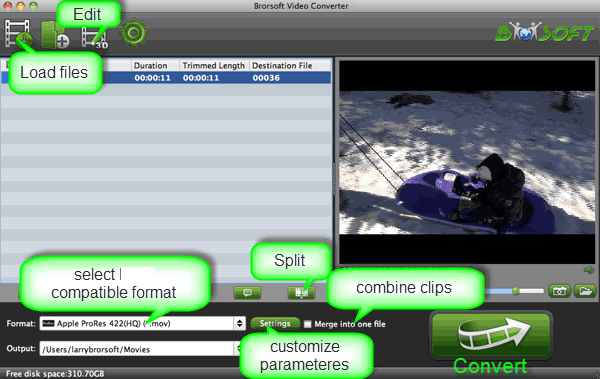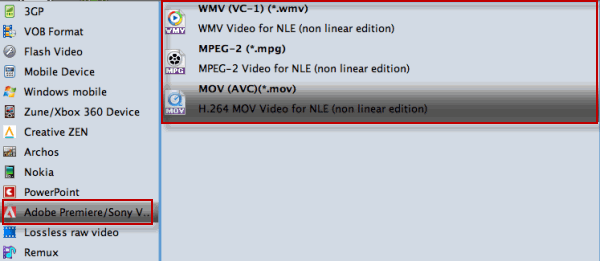How to Native Import Canon MOV footage into Adobe After Effects
Summary: If you encountered problems importing Canon .MOV files into Adobe After Effects CC/CS6/CS5/CS4 on Mac OS X, you can follow this article to find the solution and solve it effortlessly.
While enjoying the stunning HD video quality of Canon DSLR .MOV footage, many folks may find it’s a painful experience to import Canon MOV into Adobe After Effects for further editing. In this article, I will give you the solution to fix the Canon MOV in After Effects CS4/CS5/CS6/CC playback and editing issues.
As well known to all, Canon 60D, 70D, 700D, 5D Mark III, 1D X, Rebel T5i, etc are all very popular sellers in the Canon DSLR series, and also in the photography market. While, a bit frustrating, the Canon .MOV highly compressed files are still not well supported by Adobe After Effects including the latest CS6, CC, as you may encounter many audio and video problems. And I know that After Effects can’t handle raw MOV videos encode in H.264, so there is no doubt that it will take more time on rendering while ingesting the files. Back to the point, if you're attempting to edit Canon MOV clips in After Effects, what's the available workaround?
The easy option to get After Effects work with Canon MOV footage beautifully is to encode .MOV to MPG or WMV and then re-import it. This will help you import the Canon file correctly and saving the rendering time. To fulfill your task, you can just get Brorsoft Video Converter for Mac, a powerful video converter, editor and player. With it, you can fast transcode Canon MOV to Adobe After Effects supported videos with optimized settings while keeping the original video quality. Besides, the all-in-one toolkit can convert all other popular videos AVI, MXF, MP4, WMV, MKV, FLV, MTS, VOB, etc. to Adobe After Effects, Premiere Pro, iMovie, FCP, FCE, Avid Media Composer and more NLEs natively supported video formats on Mac OS X (Mavericks included). For windows users, please turn to Brorsoft Video Converter to get the work done.
Converting Canon MOV to After Effects compatible formats
Step 1. After downloading, install and run this MOV Converter for After Effects, just copy the MOV files from your camera to your hard drive. Import the files to the software for converting. 
Step 2. Click “Format” bar to choose the output format. Click and choose “Adobe Premiere/Sony Vegas” > “MOV (AVC) (*.mov)”, or “MEPG-2(*.mpg)” as the best format for editing Canon MOV in After Effects.
Tips - Click "Settings" button, you can adjust the video and audio parameters, including the Bitrate of Video&Audio, Video Size, Sample Rate, Frame Rate, Audio Channels, etc., by clicking the Settings button on the main interface for getting the best quality.
Step 3. Click the arrow button to start converting Canon MOV to MPG(MPEG-2) for Adobe After Effects.
After the process completes, click "Open" button to find the generated videos, and then you can transfer the recordings to After Effects easily and quickly. In this way, you can edit your Canon H.264 .mov files in After Effects without issues.
More Guides:
Import Canon 1080p MOV Files to Final Cut Pro
Easy way to convert MTS files to .MOV for free
How to Get Final Cut Pro work with MPEG files
Can Adobe After Effects import Nikon MOV footage?
iMovie does not recognize MPEG 4- Any workaround?
Tricks for Editing Nikon D810 MOV in Windows Movie Maker
Source:Edit Canon MOV files in Adobe After Effects